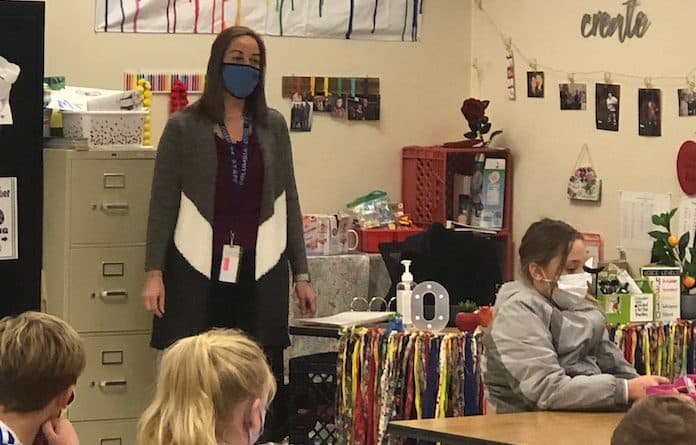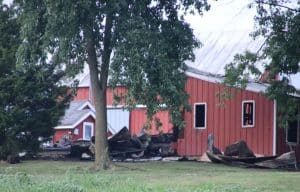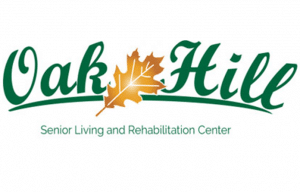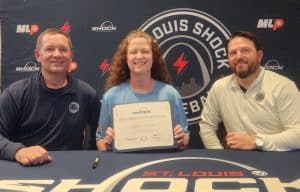Educator shortage hits home

From teachers forgoing prep periods to fill in for absent coworkers to substitutes being moved from one school to another 15 minutes before the day starts, the most recent COVID surge has drawn attention to educator shortages.
However, these recent jarring impacts may be indicative of a problem that started long before the pandemic, locals in the field say, with the pandemic just making it worse.
The Illinois Association of Regional Superintendents of Schools has been conducting a survey among Illinois school districts the past five years. IARSS president Mark Klaisner told Capitol News Illinois that over this half decade, school officials have been reporting a shortage of qualified educators.
The most recent survey, conducted in fall 2021 by Goshen Education Consulting, found 88 percent of the 663 responding districts had a shortage of full-time teachers, with 98 percent reporting a shortage of substitute teachers.
Local superintendents confirmed they have been seeing a shrinking pool of qualified applicants for teacher and administration positions in recent years.
“When we’re advertising positions, we have still been able to fill the positions that we’re trying to fill, but the number of qualified applicants that we receive is going down. We don’t have near the pool of applicants to choose from that we did a decade ago,” Waterloo Superintendent of Schools Brian Charron said, adding the state has seen a declining number of college students wanting to pursue the field.
At first, the shortage of qualified applicants was visible in specialized areas, but now the trend is reaching other areas of education, Columbia Superintendent of Schools Chris Grode said.
“We’ve seen it for years in the really specific, hard-to-fill positions, but now we just get more and more people not going into education,” Grode said. “In Columbia, if I’m looking at a position that maybe seven years ago I would get 100 good applicants for, I’d be lucky if I can get 10 to 15.”
In the Capitol News Illinois report, Klaisner noted special education, English as a Second Language, science and math teachers are among the hardest to find.
Columbia posted a vacancy for a science teacher last week.
“That’s going to be a hard one to fill,” Grode said of the position. “Finding somebody that can do the AP and the dual credit and is a good teacher with the kids is a tight needle to thread.”
Charron and Grode said one factor in the lessening amount of interest in the field could be linked to the pay and benefits teachers receive. Compared to other fields that require a bachelor’s degree, educators are paid on the low end.
Grode added that as this continues, exams to become a teacher are becoming increasingly difficult.
“You also have to consider the cost of going to college now also,” Charron said. “Teaching is not a high-paid profession for those coming out of college.”
Grode said the pay for educators, while it and additional benefits have improved over the years, reflects how society views the profession.
“Who should get paid more, someone who touches the lives of hundreds and hundreds of children, or somebody who can hit a baseball out of the park on a regular basis? What’s more valuable?” Grode asked. “Teachers are not paid what they’re worth. I would say that a person who touches the lives of my children should get paid more than the person who hits a baseball out of the park on a regular basis. But, the (athlete) brings in more money to get paid with, so that’s an interesting economics question.”
A change in the state teacher retirement system that occurred a decade ago may also have led to less students wanting to enter the profession, Charron said. He explained that this alteration made it so teachers may have to work longer in order to be eligible for a full pension.
“I think when the pension system changed in 2010 – it took effect in 2011 – that also had a negative impact on the number of people who want to be teachers in Illinois,” Charron said. “For employees that were employed prior to 2011, they are allowed to retire with full benefits once they have completed 35 years of service. (For teachers who started) after that, in order to get full retirement they have to work until age 67.”
Being so close to Missouri poses a unique problem for area schools.
“There are many universities that have been reporting a significant drop in enrollment in teacher preparation programs, so the supply of teachers coming out of the university systems is going down and when you are in a community that neighbors another state whose compensation or pension system is better than what Illinois provides, then it does become difficult to compete for those teachers,” Charron said.
Chase Guercio, an English teacher and wrestling coach at Waterloo High School, explained his parents, who were teachers, warned him there would be an impending educator shortage because of such economic factors.
“In regard to what my parents told me growing up, they said that there would likely be a future shortage due to the low pay teachers receive for the amount of work they put in,” Guercio said. “I think this has only been extrapolated by the amount of adaptation teachers have had to make with remote learning and COVID protocols.”
In recent years, education has been put under a microscope, and issues schools face have become political hot buttons. For example, school mask mandates – which teachers are often charged with enforcing – can seem like a political statement to some parents.
“It seems as though everyone wears their politics in the forefront of their minds anymore and there’s a lot of people that are quick to respond with anger and frustration rather than listening and understanding. We’re in a profession to teach and nurture children and we’re sometimes caught up in many political debates that have nothing directly to do with our job as educators,” Charron explained, stating he worries this could deter more potential teachers than the coronavirus itself.
In years leading up to the pandemic, teachers have borne the brunt of the educator shortage in many ways, from taking on larger class sizes to overall increased workloads, Grode said. This burnout has led to some teachers leaving the profession or counting the days until they can retire.
By compromising one of the most meaningful parts of teaching, the pandemic has caused more to leave – or consider leaving – the world of education, Guercio said.
“After we went fully remote last year, teachers were still in their empty classrooms only to be able to communicate with kids through Zoom. Most teachers, including myself, got into this profession to help kids and develop meaningful relationships. It was very hard to sit in isolation during the work day without the usual joy and energy that kids bring to the classroom,” Guercio said, adding, “That was probably the lowest point in my career as an educator.”
Charron explained the supply of educators is largely based on older educators encouraging youth to pursue the field. With less job satisfaction due to the above issues and more, Charron said less educators are telling students to follow in their footsteps.
“A lot of times there’s a family of educators where mom and dad are teachers and encourage their kids to be teachers,” Charron said, continuing, “Each one of us as we’re going through these challenging times are asking ourselves, ‘Would we want our children to go through what I’m going through?’ and many of us are saying ‘No, it’s not worth it.”
The shortage of substitute teachers, which the superintendents said had existed pre-pandemic as well, has also put strain on the teachers and could further contribute to burnout.
“If you don’t have subs, teachers will cover so they lose their planning time or they lose their break in the day. It is exhausting to be teaching all day. It really is. You’ve got to have a level of energy to engage those kids and keep them on task,” Grode said.
As Charron explained, there was a high demand for workers even before the pandemic’s cross-industry labor shortage. This trend played a contributing factor in establishing the substitute shortage, he said.
“In Illinois, they have relaxed the standards a little bit, but to be a licensed substitute to cover a long-term substitute position, it does require that you have a bachelor’s degree,” Charron said. “When the job market is such that there’s a high demand for employees, those with four-year degrees typically have jobs. During a recession when people are struggling to find jobs, our substitute pool is higher.”
With the Omicron variant causing large numbers of teachers and staff to be home sick coupled with the sub shortage, internal subbing is becoming more commonplace. Of the districts who responded to the fall 2021 IARSS survey, 96 percent said they are facing a crippling substitute shortage.
“We have a lot of teachers who have contracted COVID in the last four weeks and we know they have to be excluded for five days. We’re also touching base with those teachers on days three, four and five to see how they’re doing because just because they’ve been excluded for five days does not mean that they’re going to be healthy enough to return after five days,” Charron said. “So, it does require constant communication and evaluation to try to keep classrooms covered.”
Janis Dirnbeck of Columbia is an elementary teacher in Missouri. She said while the neighboring state has an “excellent” retirement program, it still struggles with sub shortages, causing teachers to sub for others.
“There was a shortage of subs before the pandemic, now it is just magnified,” Dirnbeck said. “If I have to take a day off, there’s a good chance I won’t have a sub. The other two teachers in my grade level will split my kids and have an extra 12 kids in a room. In middle school, teachers are covering classes on their plan time, essentially having no break all day except a 20-minute lunch.”
Alaina Swan, a local substitute teacher, has personally seen the demand for her services skyrocket with the pandemic – especially since Omicron hit after winter break.
“Before Christmas break I was subbing anywhere from one to three days a week, which is exactly where I expected to be during the pandemic and (with) seeing a lot of people out,” Swan said. “The last three weeks I have been subbing every day and even getting phone calls 15 minutes before I’m supposed to be at one school to change and go to another school more in need … The last two weeks, in my opinion, were the worst the school system has seen during all of the pandemic.”
Swan said with pandemic protocols and risks, she has seen much hesitation among substitutes.
“The older generation of (substitutes) is dwindling down either because they’re scared to be in the pandemic-era schools or because they aren’t vaccinated and willing to test every time they sub,” Swan explained.
It’s individuals like Swan – a stay-at-home mom who began subbing after she saw the need – who are helping school districts get through these tough times.
“We’ve encouraged parents or other community members to sub that have degrees that have schedules that would (allow them to sub). Sometimes people have work hours in their normal line of work that would give them a day or two a week that they’re available to sub, and we have some people in that scenario,” Charron said, later continuing, “We have a number of members in the community that do fill in and (sub for) long-term maternity leaves or other leaves of absence that have done a tremendous job for us and we sincerely appreciate those people.”
Charron said in addition to bringing in subs from the community, the district is also working to get more of their paraprofessionals certified to be substitute teachers and increasing substitute pay to help quell the shortage.
To prevent teacher burnout, which can further accellerate the decline in educators, Charron said Waterloo is trying to maintain “a positive climate.”
Part of this, he said, is ensuring teachers have input on decisions and can take an active role in negotiations.
As Columbia Assistant Superintendent of Schools Alyssa Smith detailed at last week’s board meeting, the district has been prioritizing the social-emotional well being of its teachers. During part of the Jan. 2 Teacher Institute Day, administrators discussed with teachers how they could accommodate teacher needs or otherwise make things easier on them.
“We have all hit our days of being frazzled at one point or another with all of this COVID craziness and so we’re really trying to make sure that we’re meeting the social-emotional needs of the students and the staff in the entire district right now,” Smith explained to board members.
The most recent IARSS survey showed 95 percent of responding districts are receiving fewer applications for open administrator positions, with 35 percent stating hiring administrators is a “minor-to-serious” problem.
As Illinois districts are seeing smaller numbers of applicants for administrative roles, many districts are finding they can not only boost teacher morale, but also increase the administrative applicant pool, by assisting teachers through job advancement.
“There are more and more schools that are making a conscious effort to prepare teachers in their districts to become administrators so that they are building their own within the system,” Charron said. “When we advertise for administrators, we typically will invite external applicants as well as our internal applicants. We find that we do have talented teachers and we do talk to them about career advancement and if they’re going to get a graduate degree to consider a master’s in educational administration so that we are constantly trying to improve that pool of applications for when positions are vacated.”






